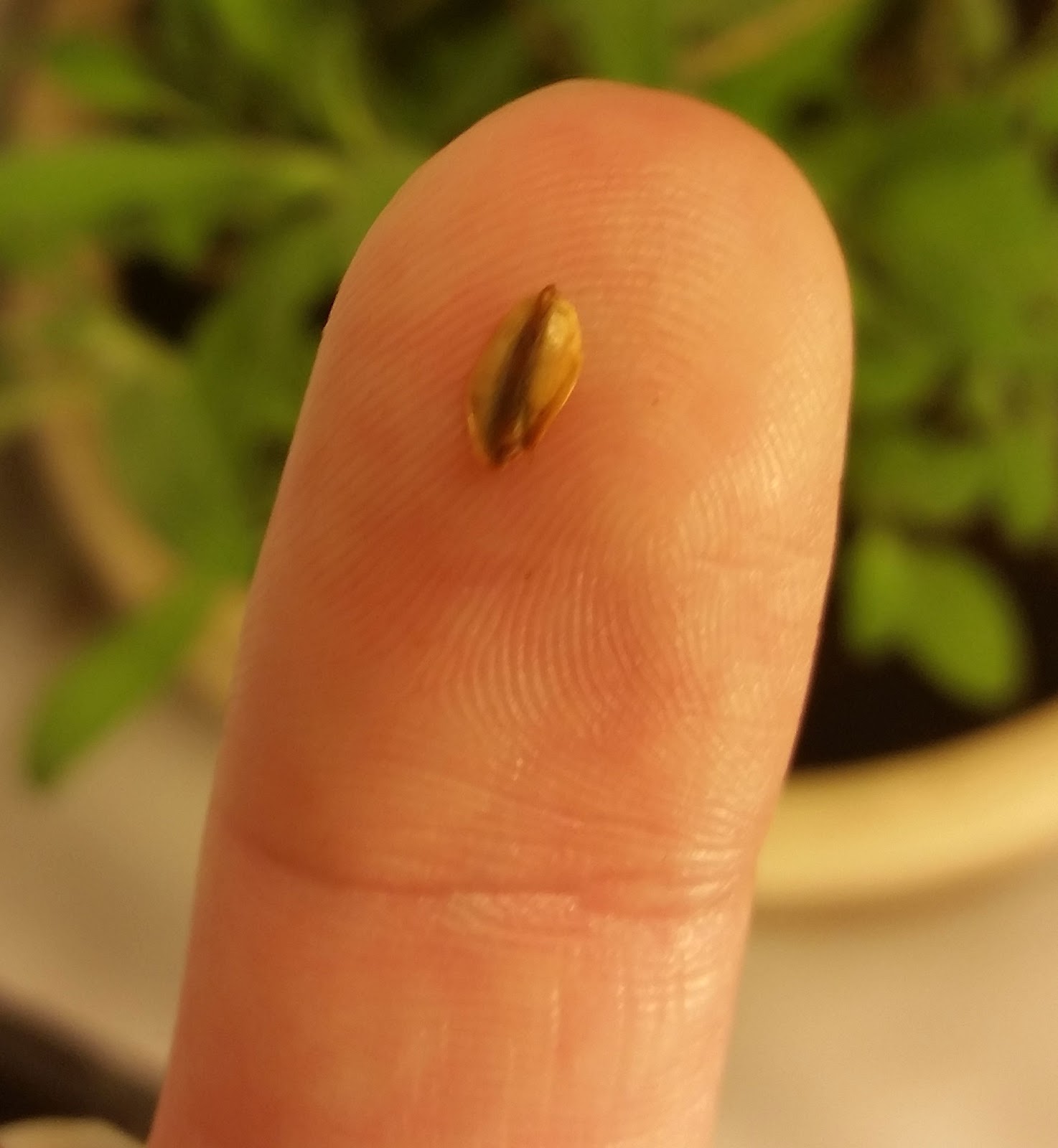
A sequoia tree seed
A tiny sequoia tree seed, above, can grow into a small young plant, like the one below.
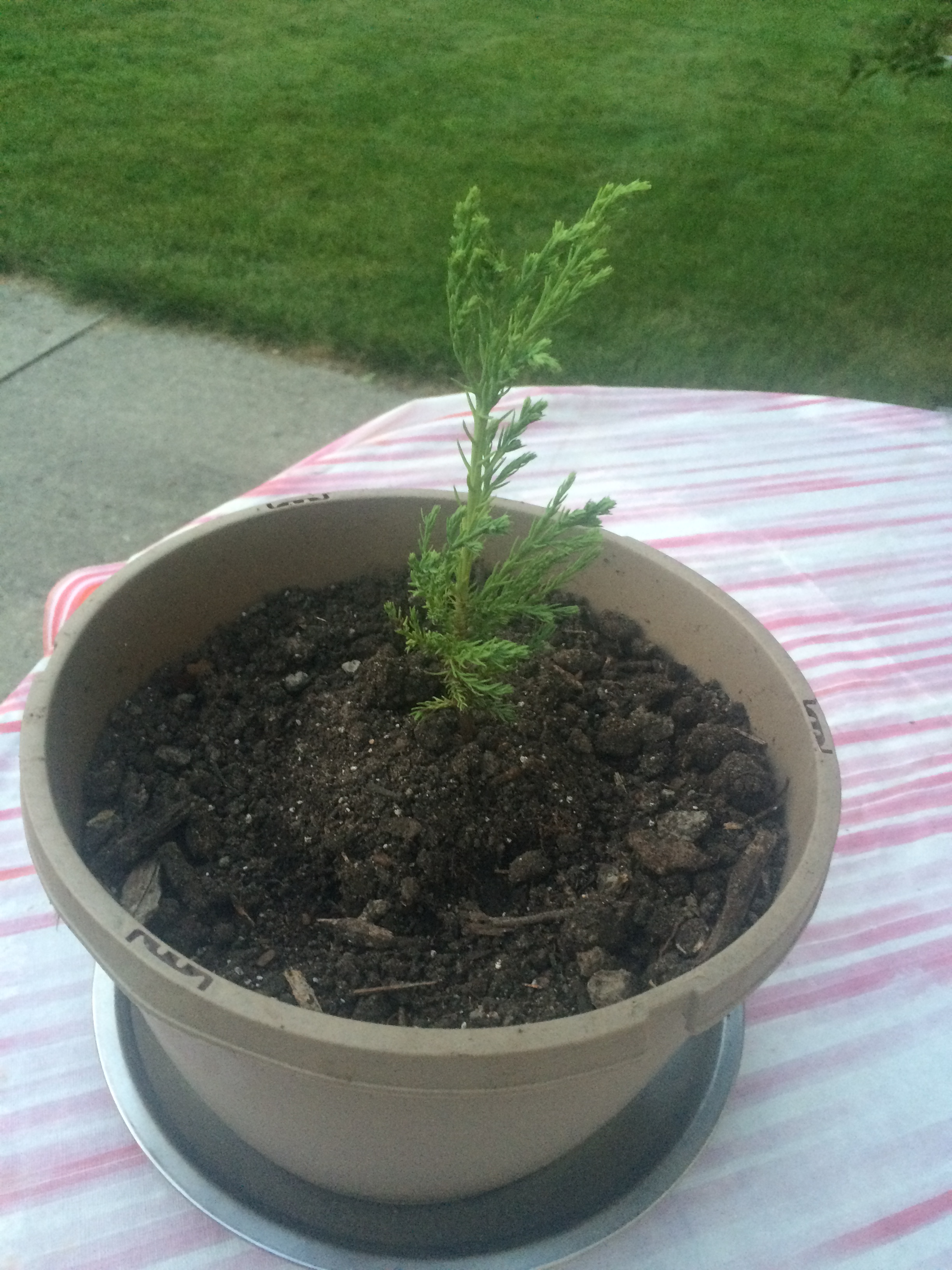
My son really wanted to bring a small sequoia tree home and plant it. I’m not sure what will happen to it, but so far, it’s still alive.
That small plant can grow into a towering giant, like this one:
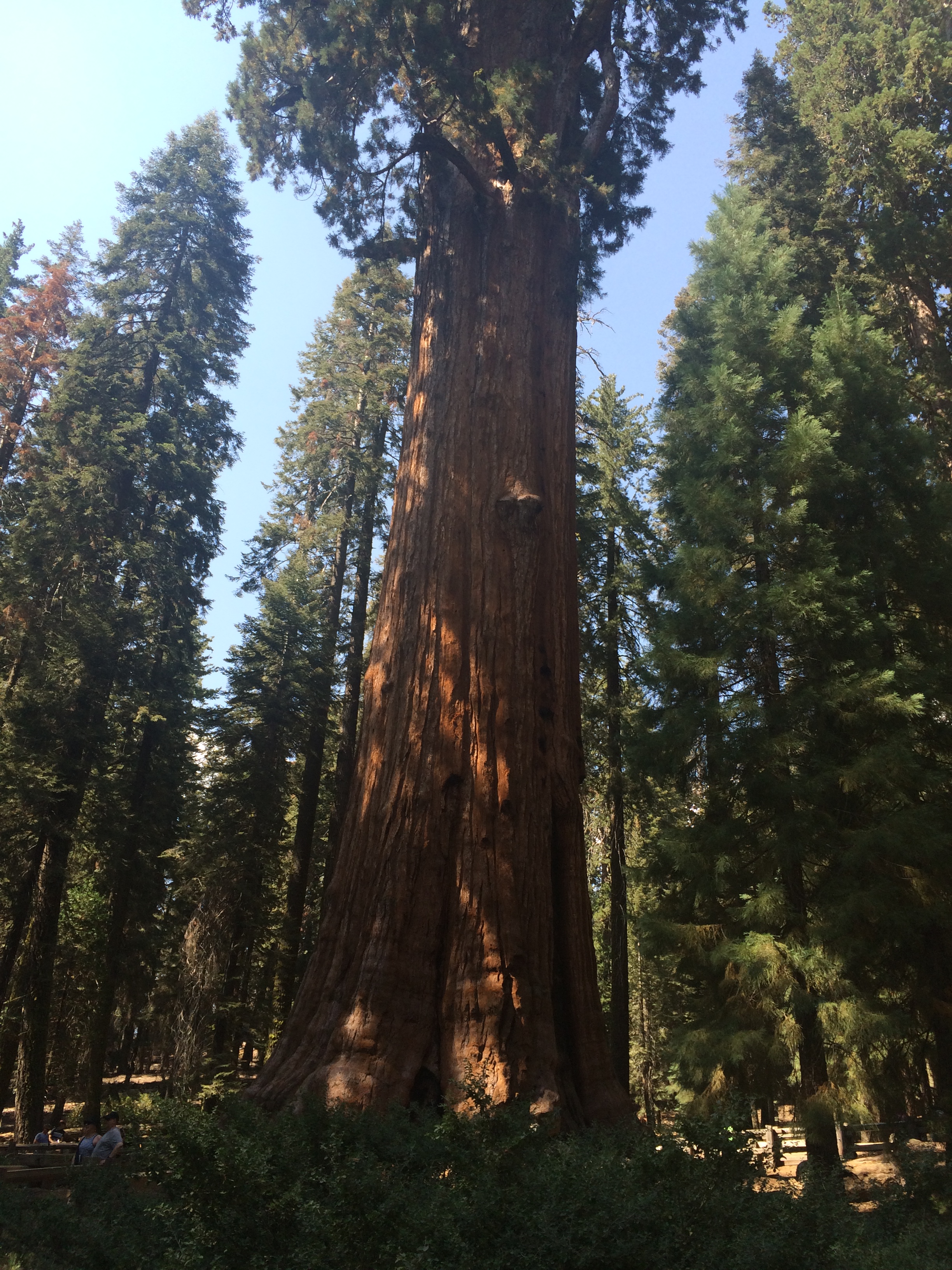
The General Sherman Tree is 275 feet tall and its diameter is 36.5 feet at the base… taken at the Sequoia National Forest
It isn’t the tallest tree (Redwoods are taller) but in terms of mass and volume, it is called the world’s largest tree. The General Sherman Tree, a giant Sequoia, stands at 275 feet tall. It’s diameter at the base is 36.5 feet across. The height of its first branch above the base is 130 feet above your head. It’s average crown spread is 106.5 feet.
This tree is in the Giant Forest of the Sequoia National Park in California. These giant sequoias loom ahead like something out of a fantasy novel. I am fascinated by these trees. Not only do they have immense potential for annual growth but they also have an exceptional life span. Large sequoias like the General Sherman tree also grew far enough away from other sequoias, and they were able to survive fires and other storms through the years.
What’s fascinating is the resilience these trees have to fires. Walking around the “Congress Trail” in the Giant Forest, evidence of fires was clearly visible on the trees. But the trees survived because they have little sap content. The bark of the sequoia trees is very thick and fire-resistant. Furthermore, fires near the base kill off part of the root system and that directly affects the crown of the tree, but over time, new foliage grows. Black scars and marks can be seen on many sequoia trees but they remain intact.
Interestingly, sequoia seeds, which are very tiny, must germinate in bare mineral soil in a sunny spot, but these circumstances exist only immediately after forest fires. Periodic fires are necessary for the continual growth of the sequoia forest.
The sequoias reach their full height of 225-300 feet between 500-700 years old. That gives you an idea of how old and how long some of these trees can survive. Their lifespan may extend for an additional one or two thousand years, but they do not grow taller; instead their trunks thicken through the addition of growth rings. The annual growth rate of the General Sherman Tree is 40 cubic feet, which is the same as the trunk of an average tree one foot in diameter and 50 feet tall!
Two hundred species of insects and spiders use sequoias as a home, but these also have not killed the tree. The presence of large amounts of tannic acid in its wood is the reason there is a lack of fungal decay. These trees, including the General Sherman tree, have survived snow and ice storms, and even earthquakes.
It is difficult to estimate the age of the General Sherman Tree because counting the rings is difficult with trees of this enormous size. The current estimate ranges from 2300 to 2700 years old. The oldest tree is the Bristlecone Pines of the Great Basin region east of the Sierra Nevada, where actual ring counts exceed 4900 years old. It’s astounding to think about how old some of these trees are.
How do most sequoias die? Would you believe that 90% of them lose their balance and fall? I wouldn’t have guessed that. Fire scars play a role in their demise by weakening the tree. The General Sherman also has one more factor: millions of people have come to see the tree, even though there are fences around it now.
It has been on my dream list to see one of these giant trees.


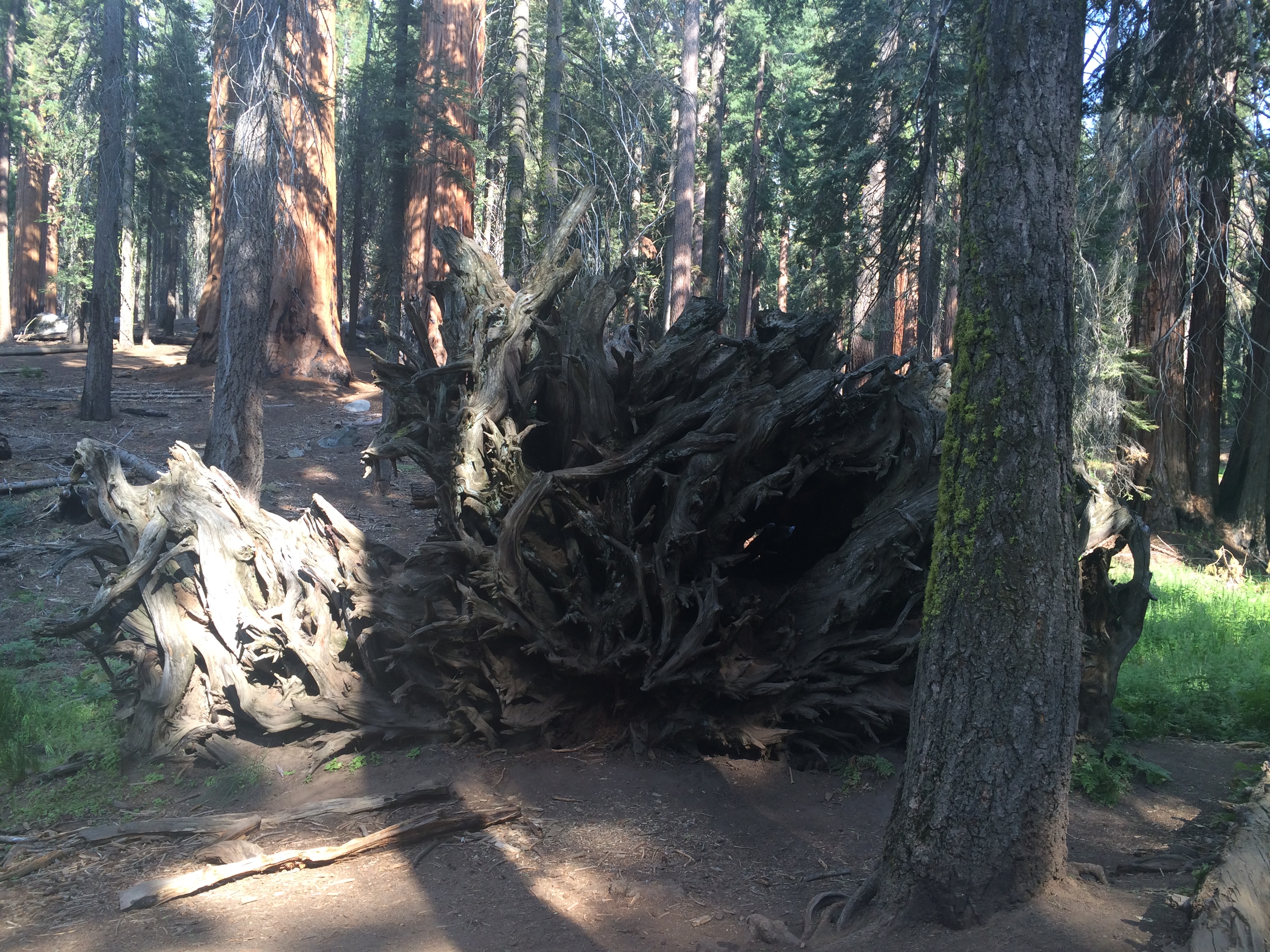
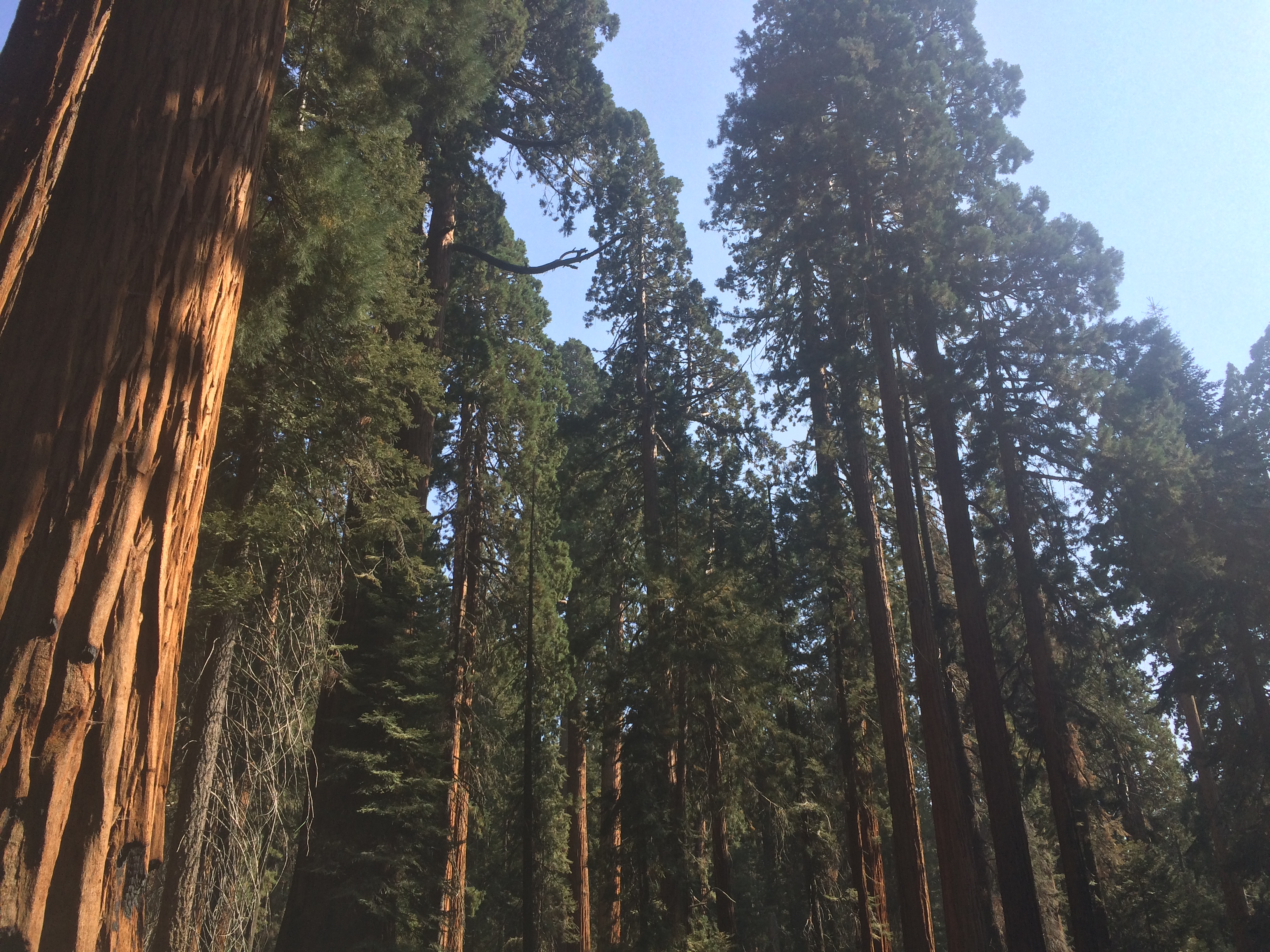
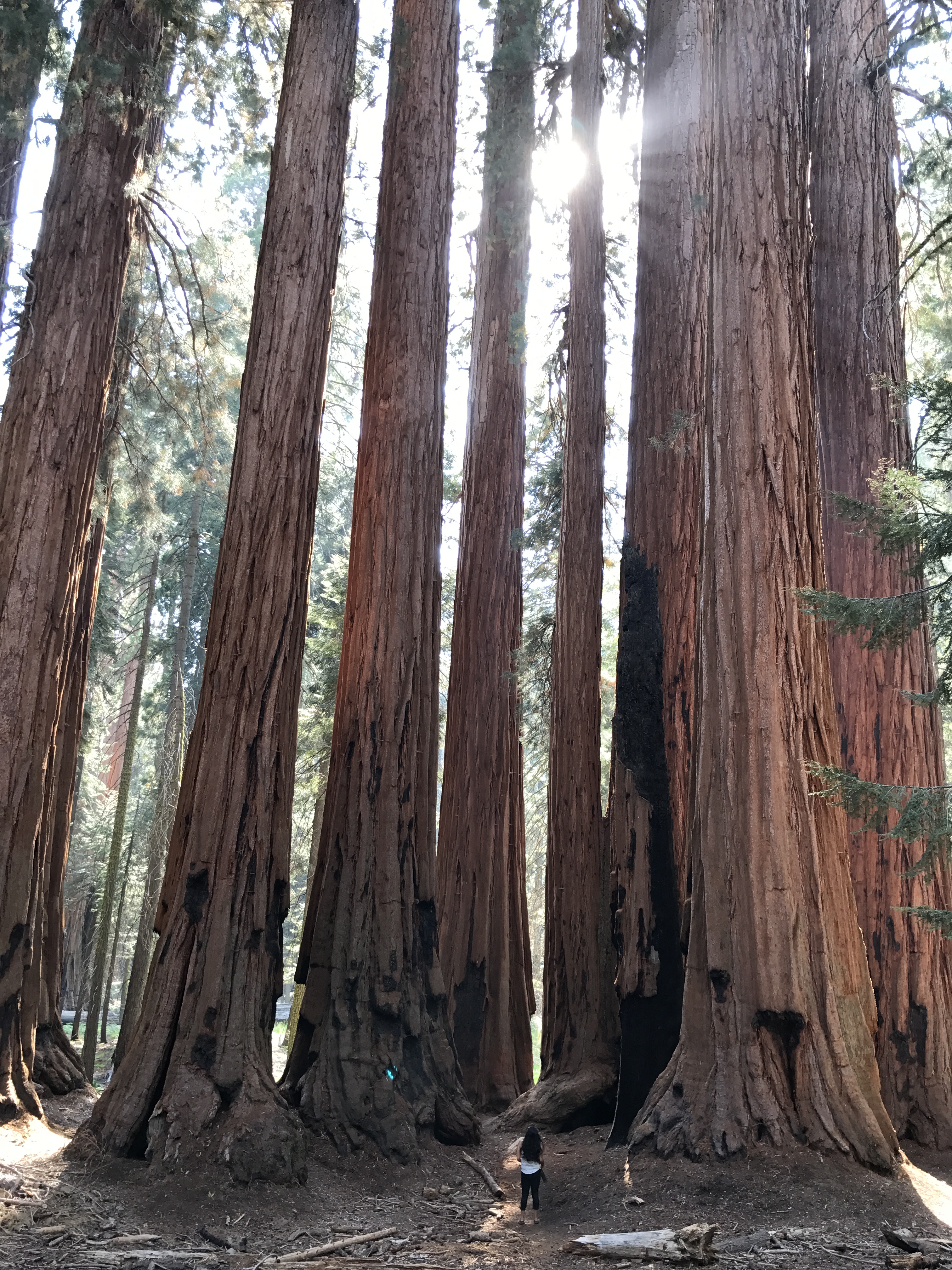
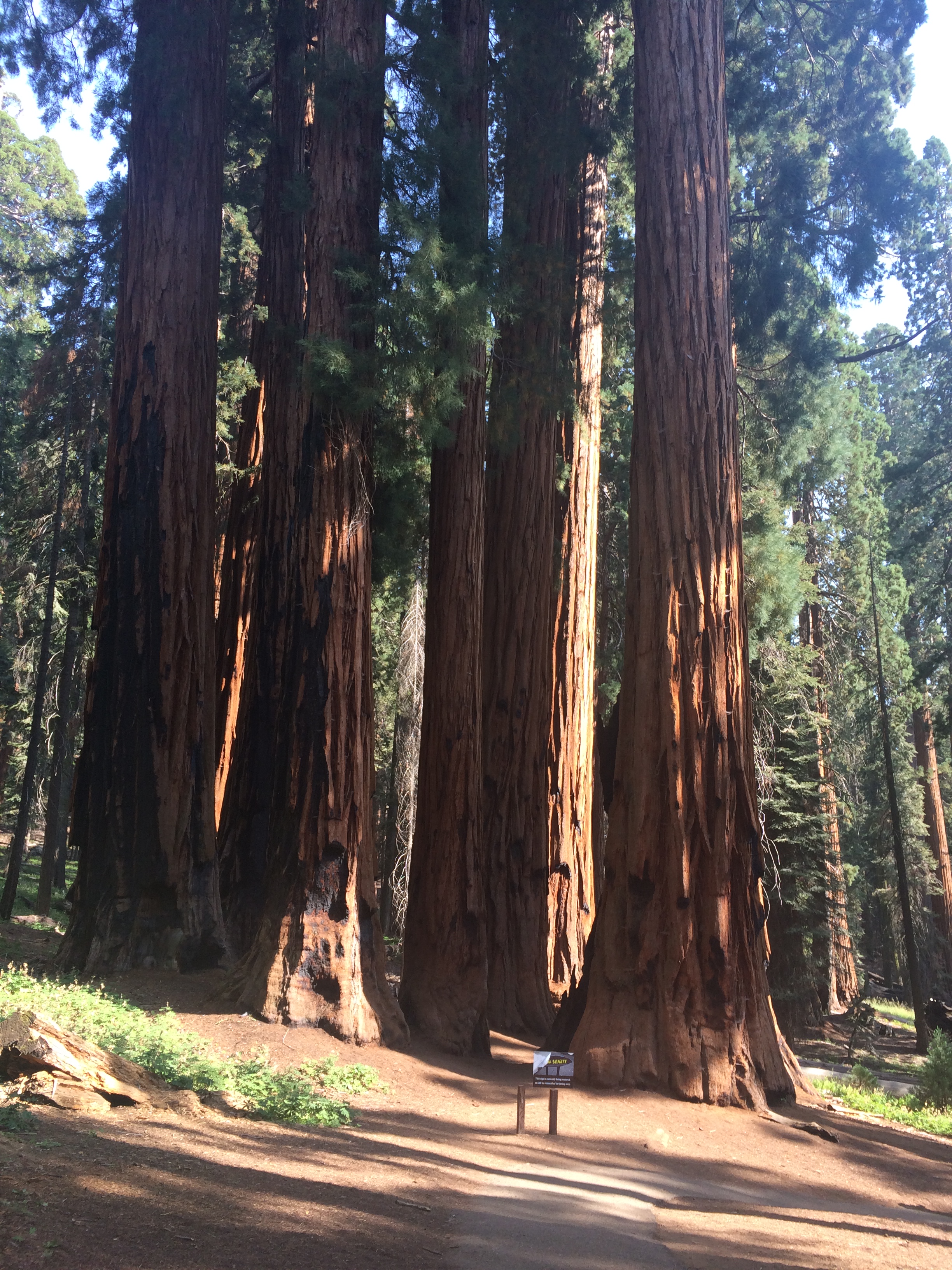
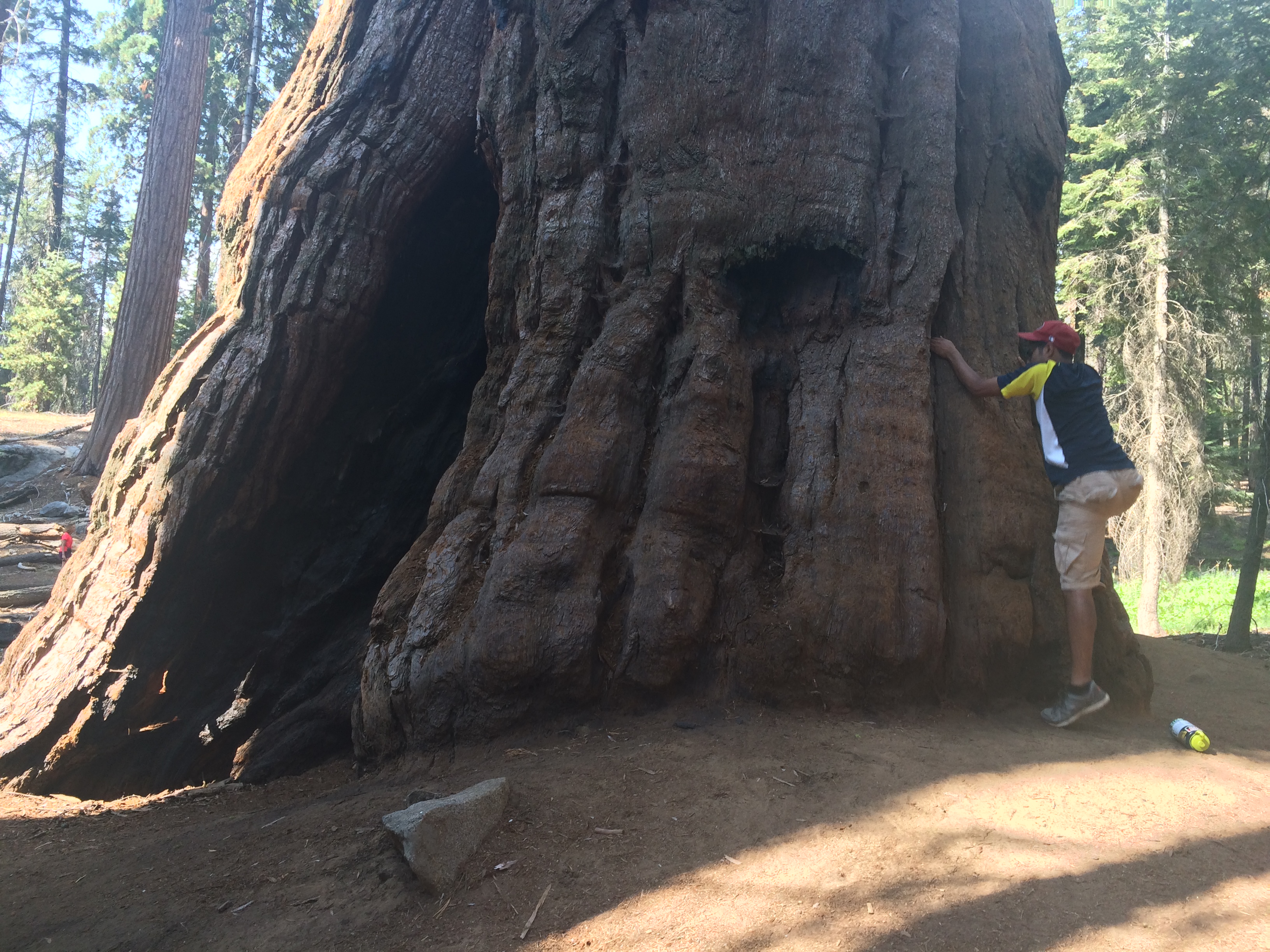
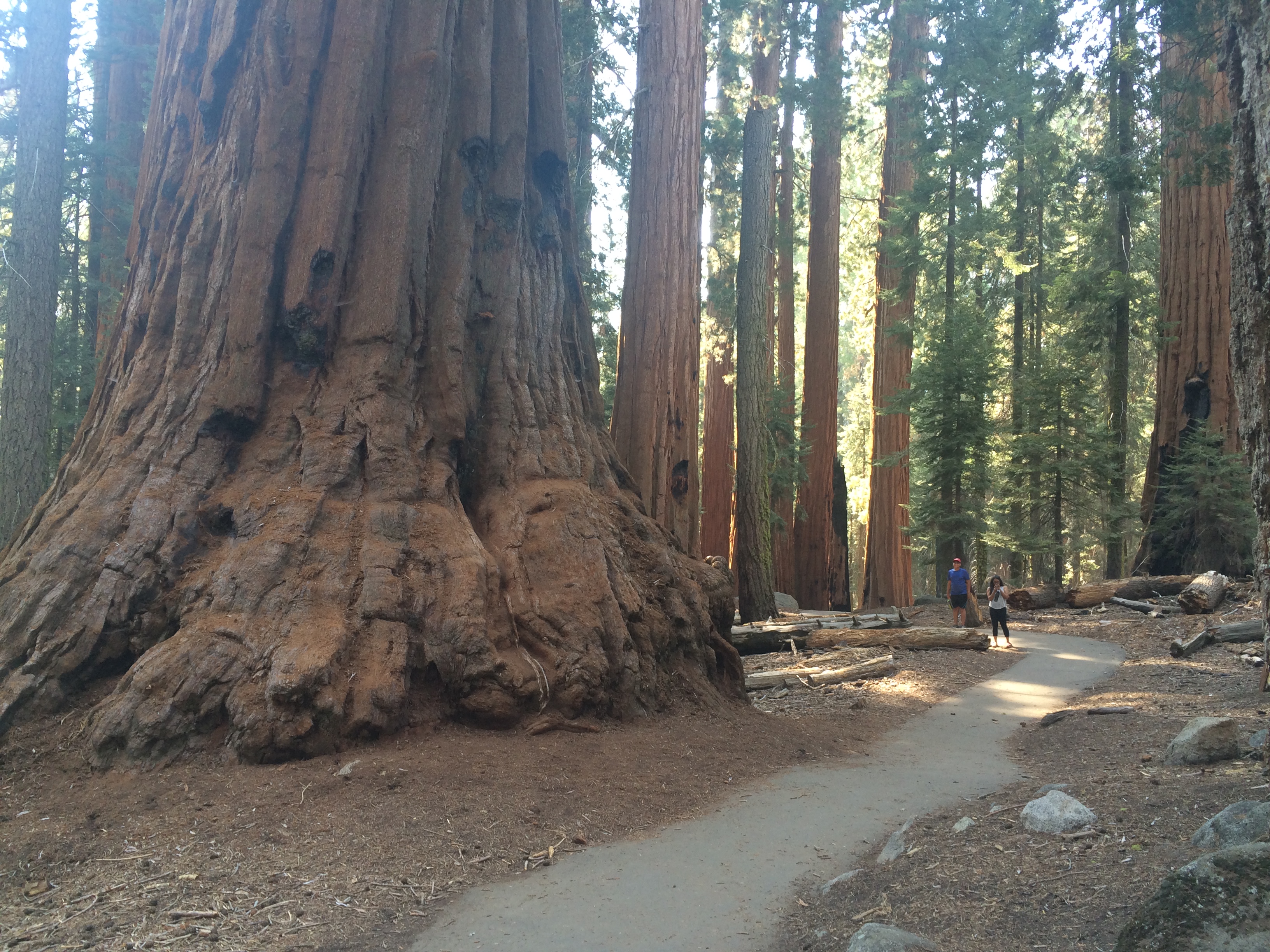
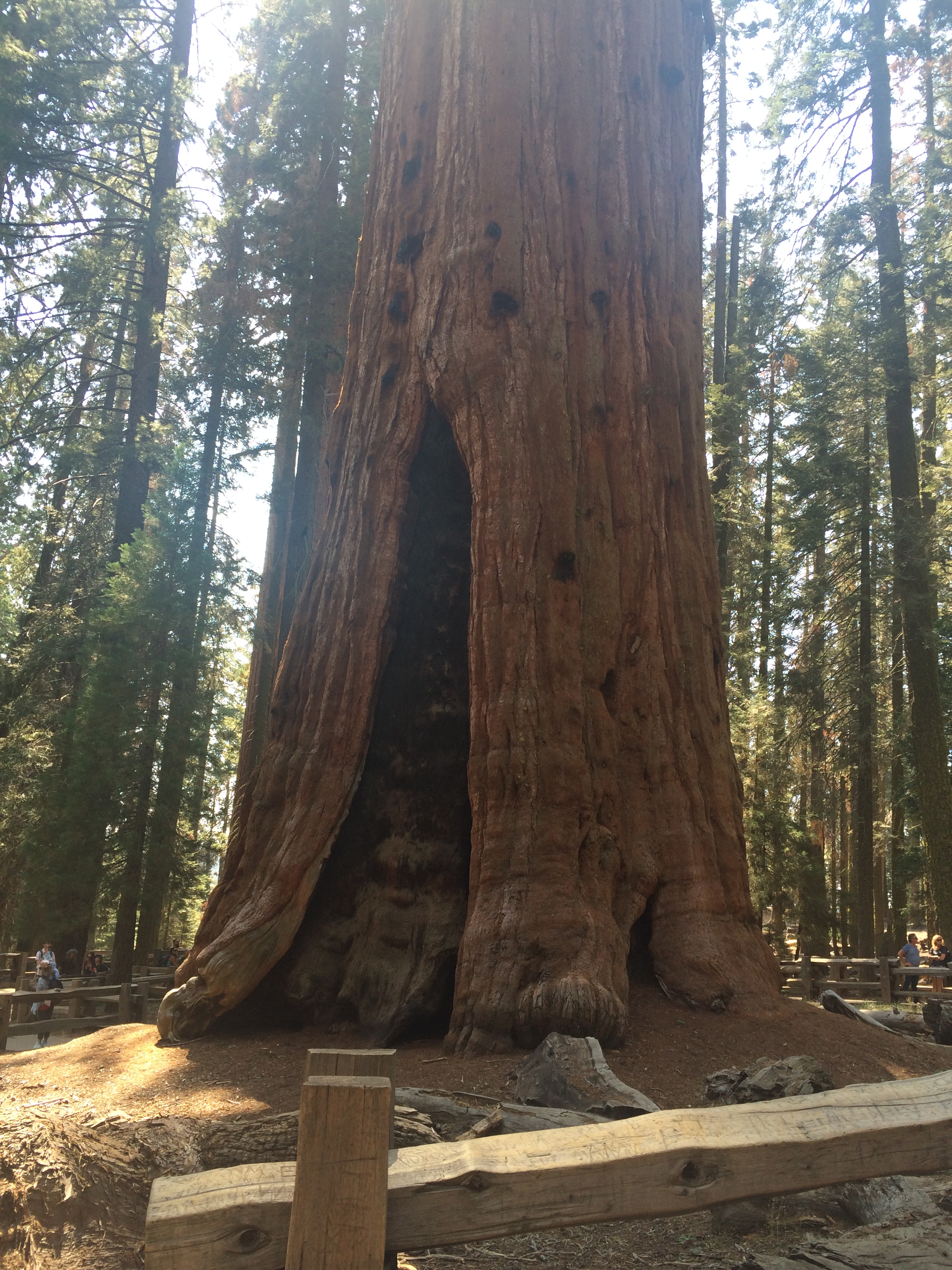
General Sherman Tree
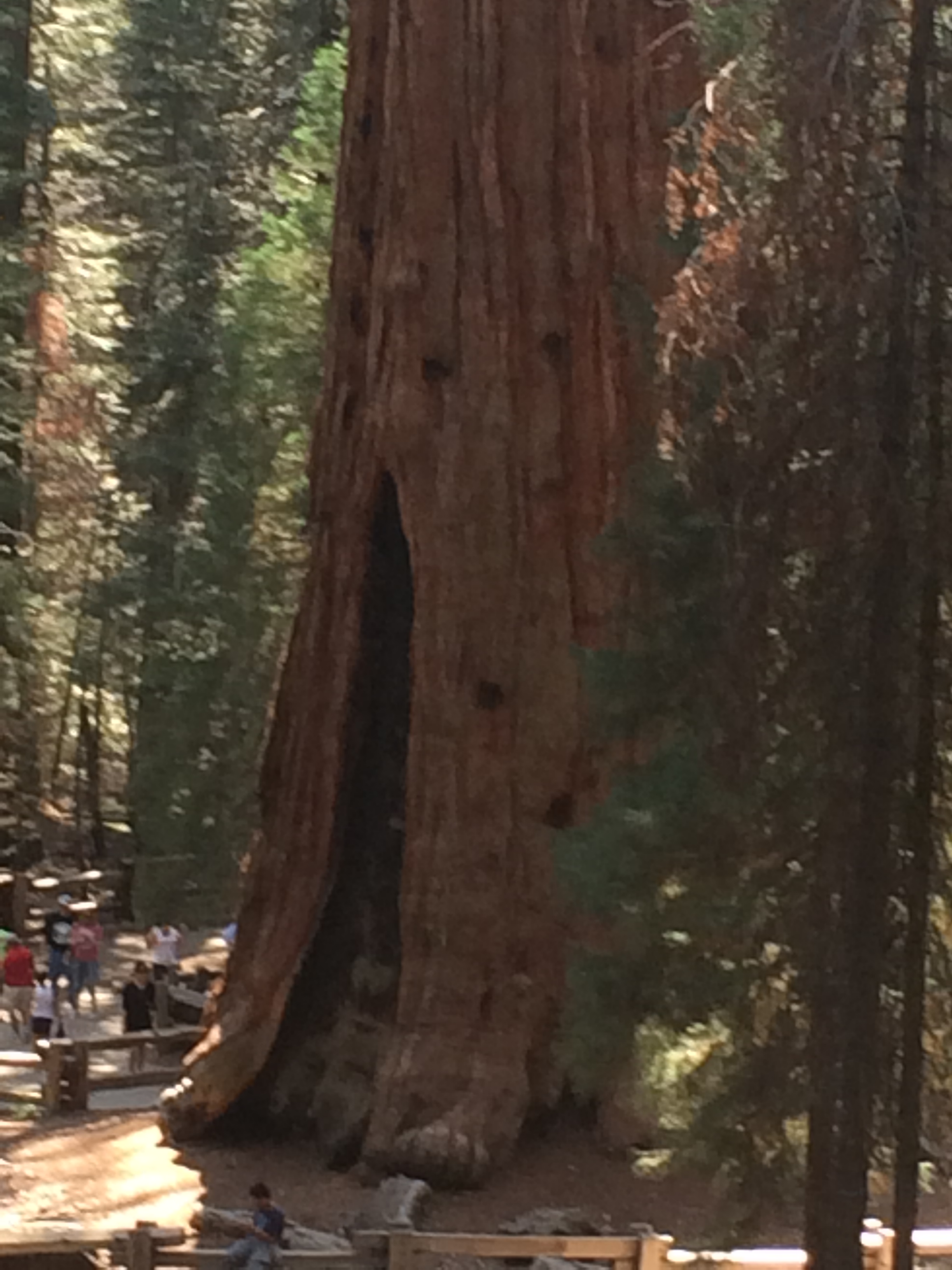
General Sherman Tree
While walking around this forest, probably one of the most beautiful forests I’ve ever seen, I was surprisingly reminded of a movie I saw when I was a kid called “The Gnome Mobile.” I saw the movie at one of those old drive-in movies, where you sit in your car and watch the big screen, and listen to the audio via a device next to the car. This movie, interestingly, was about miniature people who lived in a forest. It’s an old Disney movie that first came out in the 1960s. I’m not sure what made me think of that movie. Maybe it’s because humans looked so small compared to the massive size of the sequoia trees. Maybe it’s because there is a part of me that still wants to believe in fairy tales.
And although the sequoia seed is still bigger than the even tinier mustard seed, this verse keeps replaying in my head:
Truly I tell you, if you have faith as small as a mustard seed, you can say to this mountain, ‘Move from here to there,’ and it will move. Nothing will be impossible for you.” — Matthew 17:20
____________________________________________________________________________________________
**Footnote: I used much of the material about the sequoia trees in this post from this little booklet I purchased at the store at the national park for 99 cents.**
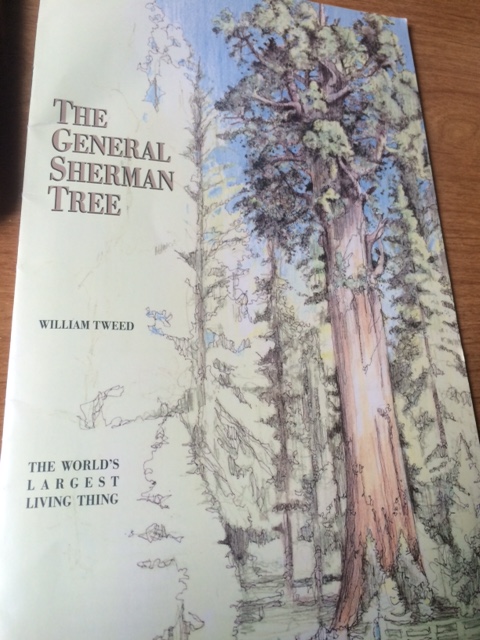
____________________________________________________________________________________________
